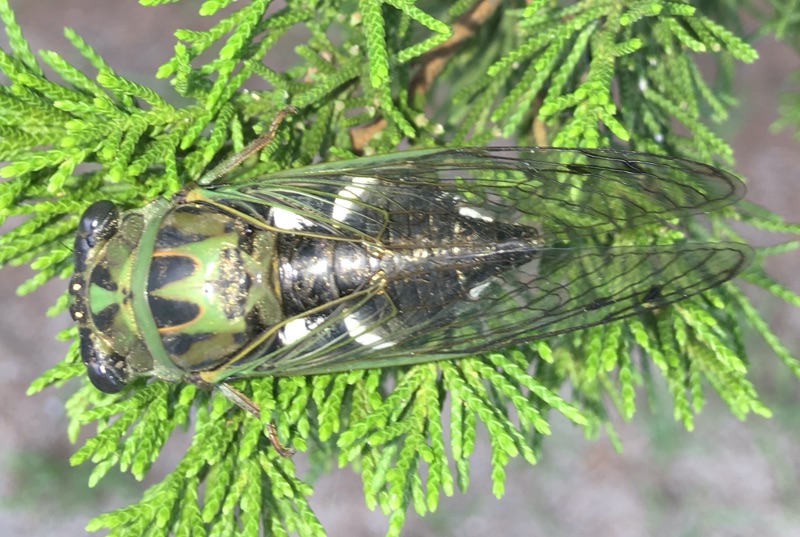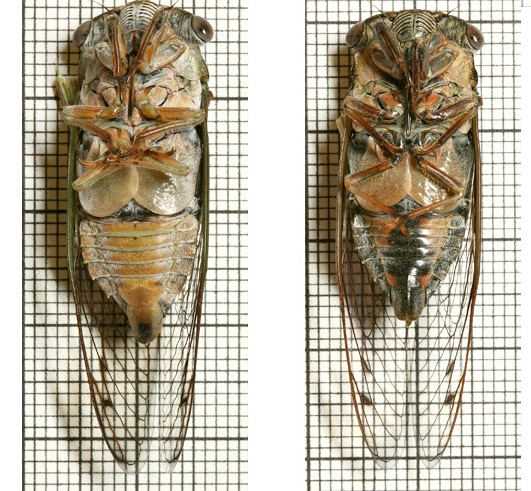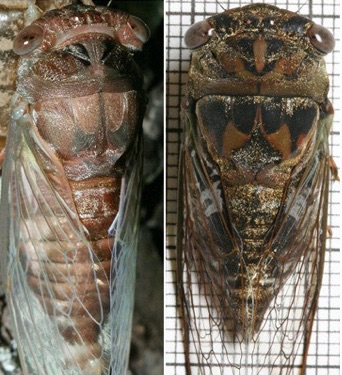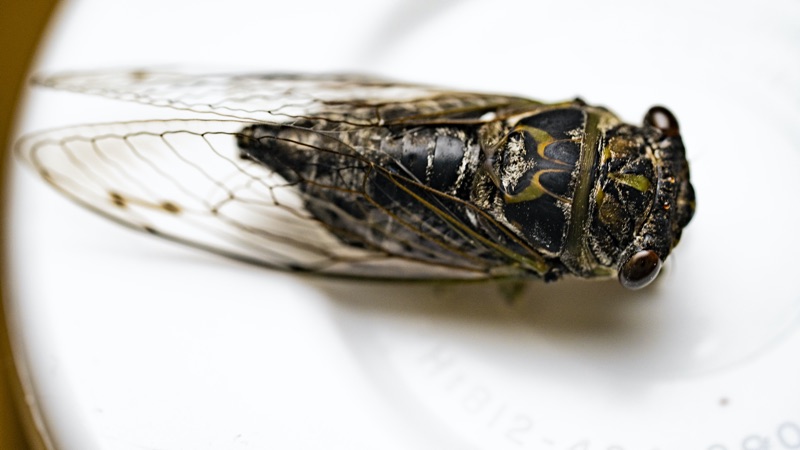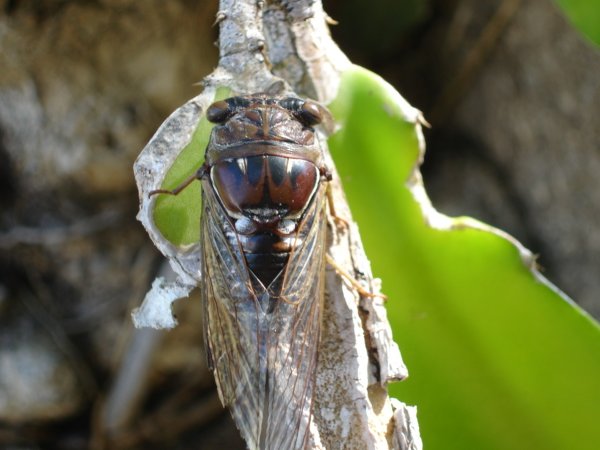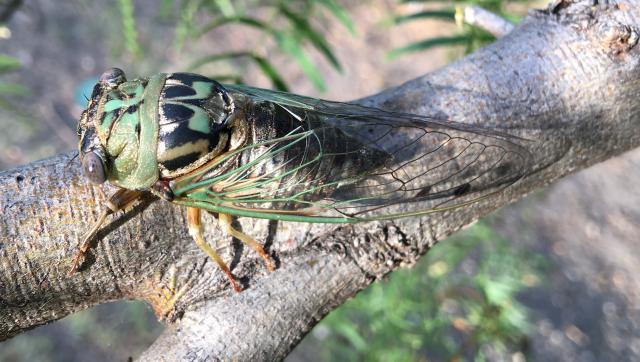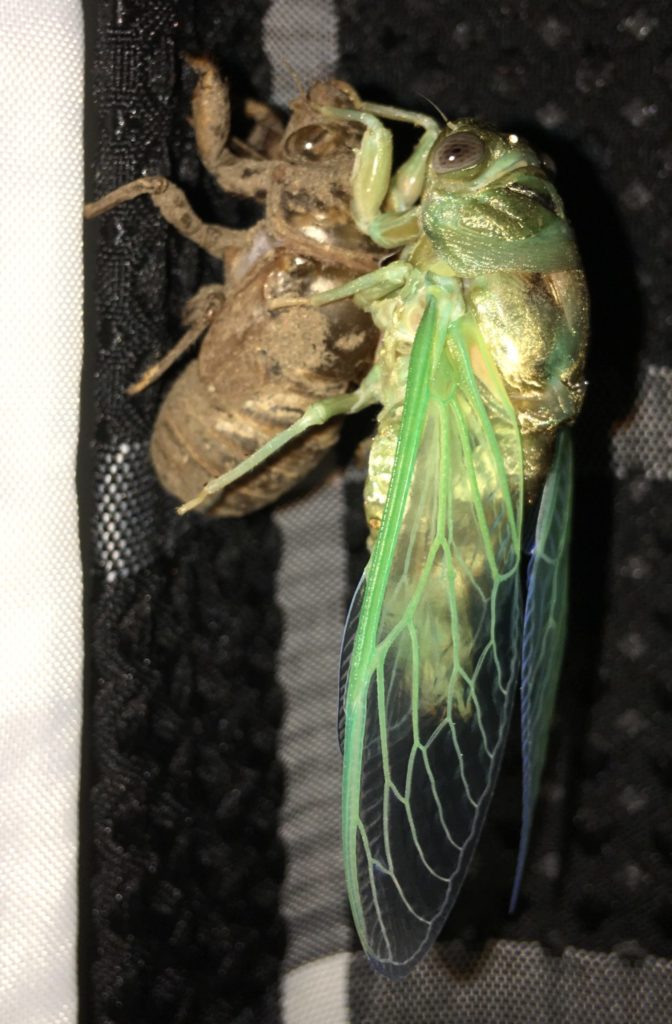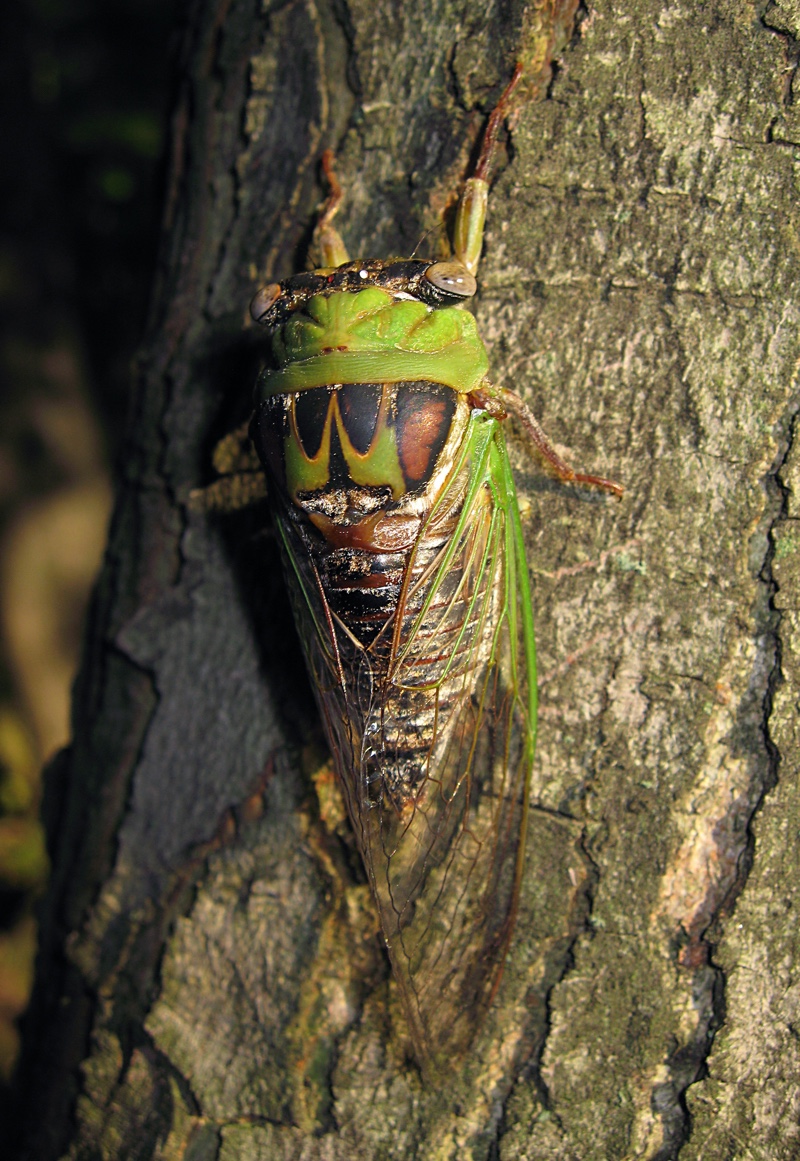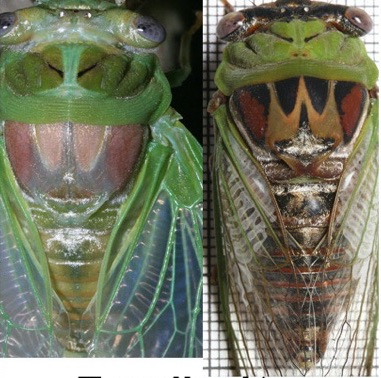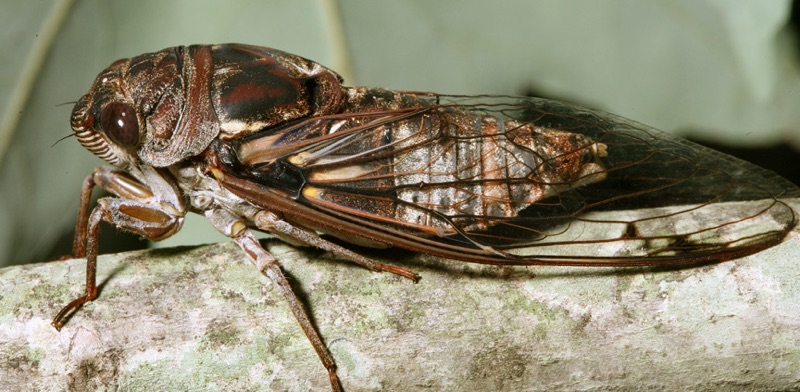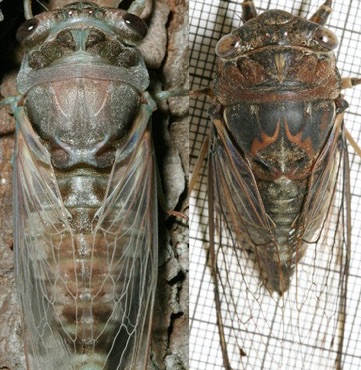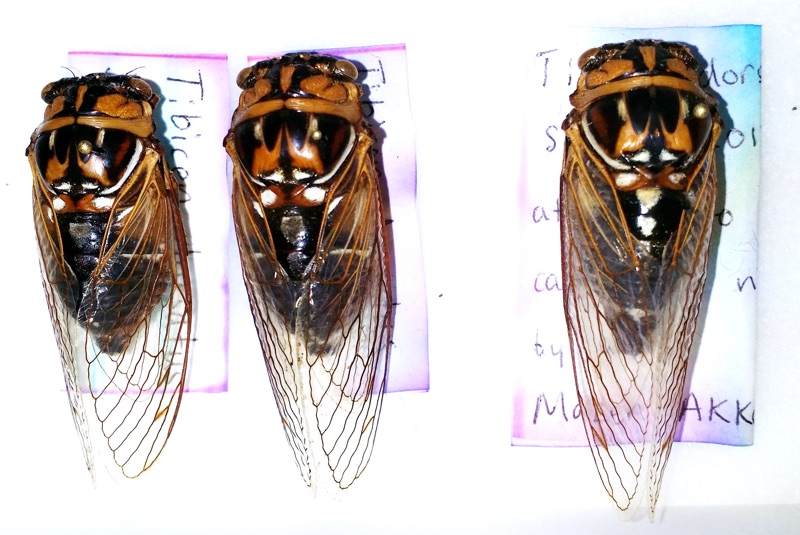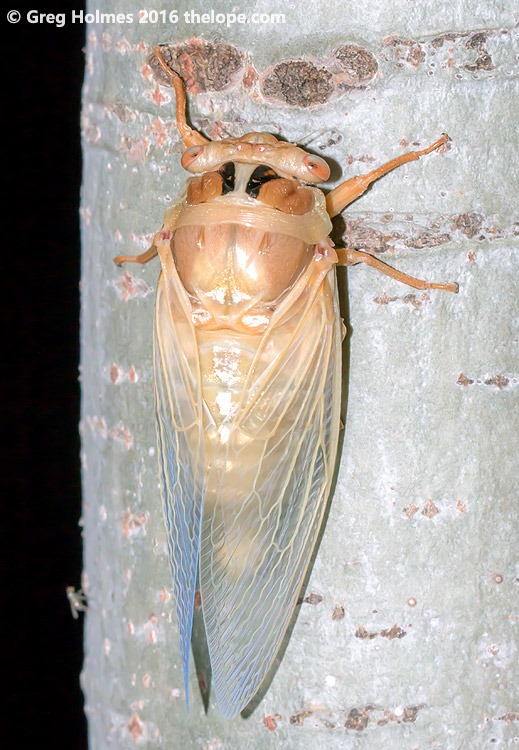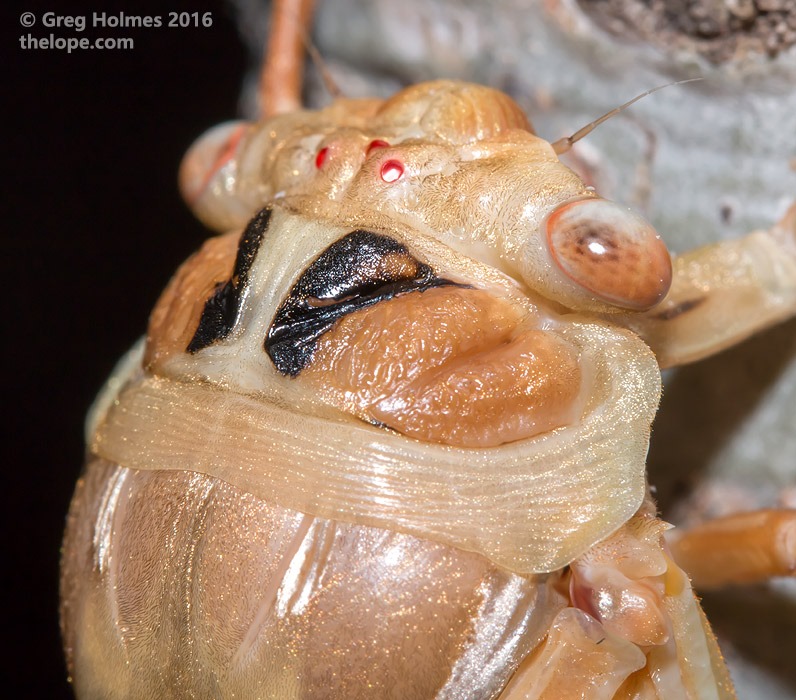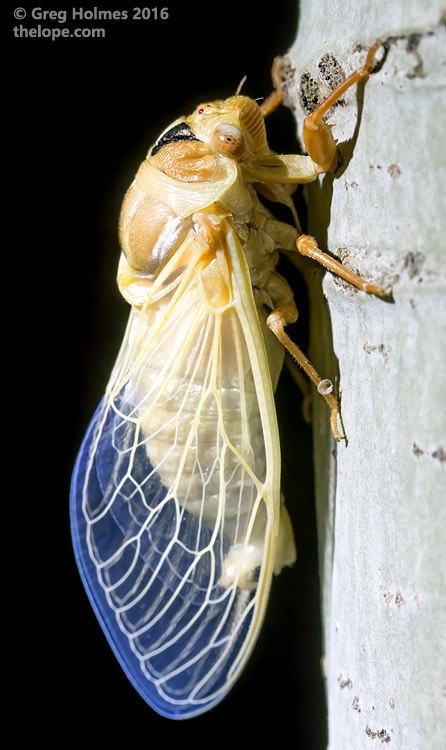Neotibicen lyricen engelhardti (Davis, 1910) aka Dark Lyric Cicada.
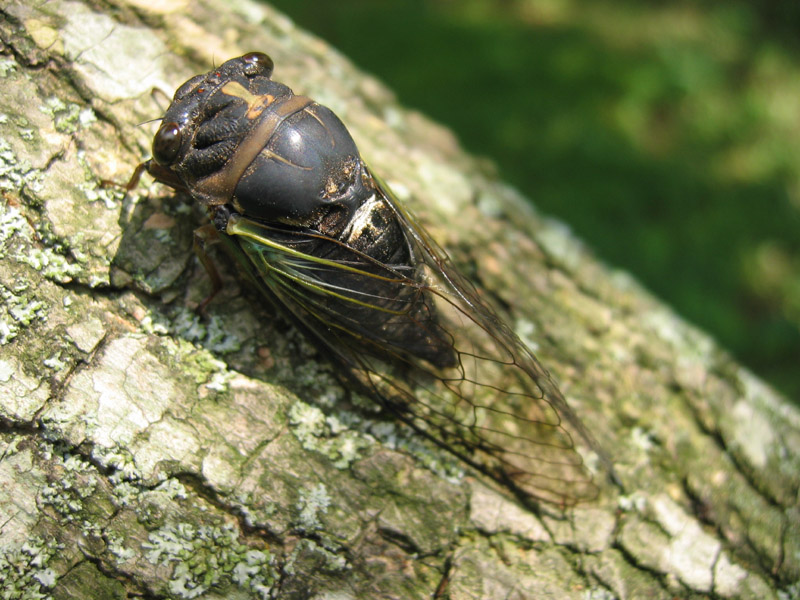
Photo by Roy Troutman. Ohio.
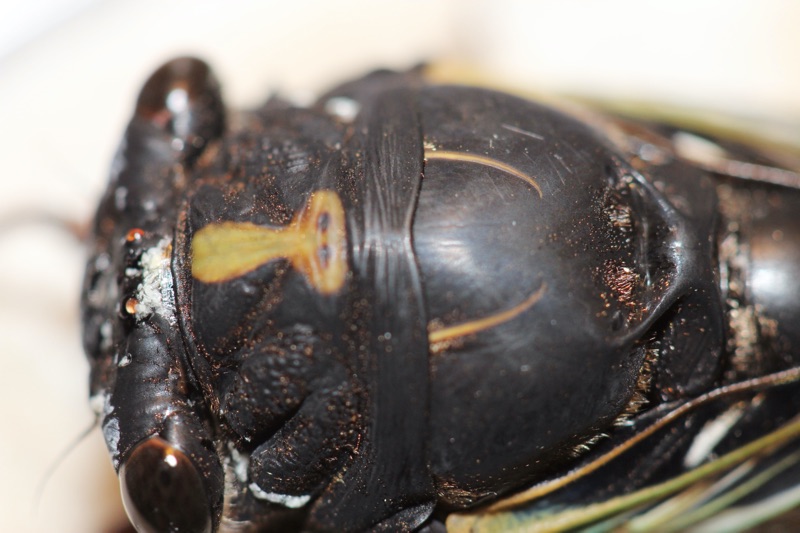
Photo by Dan Mozgai. North Carolina.
See all Neotibicen lyricen engelhardti images and information on cicadamania.com.
Song
This song is of the other Neotibicen lyricen sub-species Neotibicen lyricen lyricen. Their songs are similar enough to use as a reference:
Source: ©Insect Singers.
Name, Location and Description
- Cicada Name: Neotibicen lyricen engelhardti (Davis, 1910)
- Short Name: N. lyricen engelhardti
- Common Name: Dark Lyric Cicada
- Synonym/Former Name: Tibicen lyricen engelhardti, Cicada engelhardti
- When: July-September. Peaks in July.
- Where it is found: AL, CT, DE, DC, FL, GA, IN, IL, KY, MD, MA, MS, NJ, NY, NC, OH, PA, RI, SC, TN, VA, WV
- Maps: Biogeography of the Cicadas (Hemiptera: Cicadidae) of North America, North of Mexico [PDF]
- Description: The Dark Lyric Cicadas have the darkest coloration of all the Lyric cicadas. Their mesonotum is almost entirely dark brown/black. They have a “soda-pop pull-tab” or keyhole shape on their pronotum.
- Eye Color: black
- Pronotal Collar Color: black
- Identification: Bug Guide
- Identification: Bill Reynolds on iNaturalist
- Identification: iNaturalist
- Type Specimen Details: The American Museum of Natural Species
- Taxonomic Information: Integrated Taxonomic Information System
Wm T Davis’ 1910 description of Neotibicen lyricen engelhardti1
Cicada engelhardti n. sp.
Length: [male] 32 mm., to tip of wings, 50 mm.; [female] 30 mm., to tip of wings 50 mm.
Head black, sometimes with narrow, tawny stripe on front. Pro-thorax black, with small, greenish fulvous central arrow-shaped spot, broadest behind. In lyricen this spot is broadest in front. Posterior and lateral borders of the pronotum black. Mesothorax nearly all black, with two faint parenthesis-like lines of fulvous partly enclos- ing the central portion. Sometimes these lines are heavier and there is a shade of fulvous on the posterior portion of the mesothorax. The inner surface of the front marginal vein is usually back and darker than the same parts in lyricen. Abdomen black above, with two nar- row pruinose lines or spots at base. Beneath, with broad central black stripe and at each side is a broad lateral pruinose border.
This insect is blacker than Cicada lyricen, lacking the considerable amount of fulvous markings of that species, particularly on the pro- thorax.
Identification Key by Wm. T. Davis from 19182
A. Large, heavy bodied species ; head broad, uncus simple, and first cross vein in the fore wings starting from radius 3 far back, or about one third distant from base of first marginal cell.
B. Uncus longer than broad. Black species with green or greenish markings and black area on the central part of the abdomen beneath, except in sayi [Neotibicen tibicen tibicen], and new variety of davisi [Neotibicen davisi].
CC. Hind margin of pronotum or collar black or nearly so (except in sayi var. australis [Neotibicen tibicen australis]).
D. Central area of the abdomen beneath black.
Blacker than typical lyricen, lacking the considerable amount of fulvous markings on the pronotum and mesonotum. A fulvous somewhat anchor-shaped mark centrally on the pronotum.
Classification:
Family: Cicadidae
Subfamily: Cicadinae
Tribe: Cryptotympanini
Subtribe: Cryptotympanina
Genus: Neotibicen
Species: Neotibicen lyricen
Sub-species: Neotibicen lyricen lyricen (Degeer, 1773)
Sub-species: Neotibicen lyricen virescens Davis, 1935
Sub-species: Neotibicen lyricen engelhardti (Davis, 1910)
List of sources
- Davis, W.T. 1910. Observations on Cicada pruinosa and a description of a new species. Entomological News Philadelphia. Vol 21. Pages 457-458. Read on archive.org.
- Davis, W.T. 1918. Mississippi Cicadas, with a Key to the Species of the Southeastern United States. Journal of The New York Entomological Society. Vol. XXVI. Read on archive.org.
- Full Binomial Names: ITIS.gov
- Common names: BugGuide.net; The Songs of Insects by Lang Elliott and Wil Herschberger; personal memory.
- Locations: Biogeography of the Cicadas (Hemiptera: Cicadidae) of North America, North of Mexico by Allen F. Sanborn and Polly K. Phillips.
- Descriptions, Colors: personal observations from specimens or photos from many sources. Descriptions are not perfect, but may be helpful.
Notes:
- Some descriptions are based on aged specimens which have lost some or a lot of their color.
